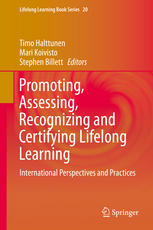

Most ebook files are in PDF format, so you can easily read them using various software such as Foxit Reader or directly on the Google Chrome browser.
Some ebook files are released by publishers in other formats such as .awz, .mobi, .epub, .fb2, etc. You may need to install specific software to read these formats on mobile/PC, such as Calibre.
Please read the tutorial at this link: https://ebookbell.com/faq
We offer FREE conversion to the popular formats you request; however, this may take some time. Therefore, right after payment, please email us, and we will try to provide the service as quickly as possible.
For some exceptional file formats or broken links (if any), please refrain from opening any disputes. Instead, email us first, and we will try to assist within a maximum of 6 hours.
EbookBell Team

4.3
28 reviewsThis book offers an international perspective on the growing interest worldwide in lifelong learning, particularly as it relates to learning beyond compulsory education and initial occupational preparation: across working life. Much of this interest is driven by key social and economic imperatives associated with the changing requirements of work and working life, the transformation of many occupations and lengthening working lives. The concerns in lifelong learning are also associated with individuals being able to engage in learning about cultural and social topics and practices that they had not so far. It is important to understand how this learning can be assessed, recognized and certified. Many in workforces across the world learn much of the knowledge that is required to maintain their employability through that work. Yet, that learning and that competency remains without recognition and certification while this could be particularly helpful for individuals seeking to sustain their employability or to extend their work into new occupations or workplaces. The first section of this book sets out the overall project and outlines the key concepts and issues. It illustrates why there is a need for promoting and recognizing lifelong learning and explains some of the terminology, concepts and key considerations. The second section informs about a range of policies and practices that are currently being deployed or have been deployed across a range of countries within Europe, Scandinavia and Asia. The last section comprises of contributions emphasizing the ways in which the assessment of workers learning takes place in different occupational contexts and different cultural contexts. The final chapter outlines how a systemic approach to recognizing lifelong learning might progress for a country which is promoting a continuing education and training system largely outside of tertiary education institutions.